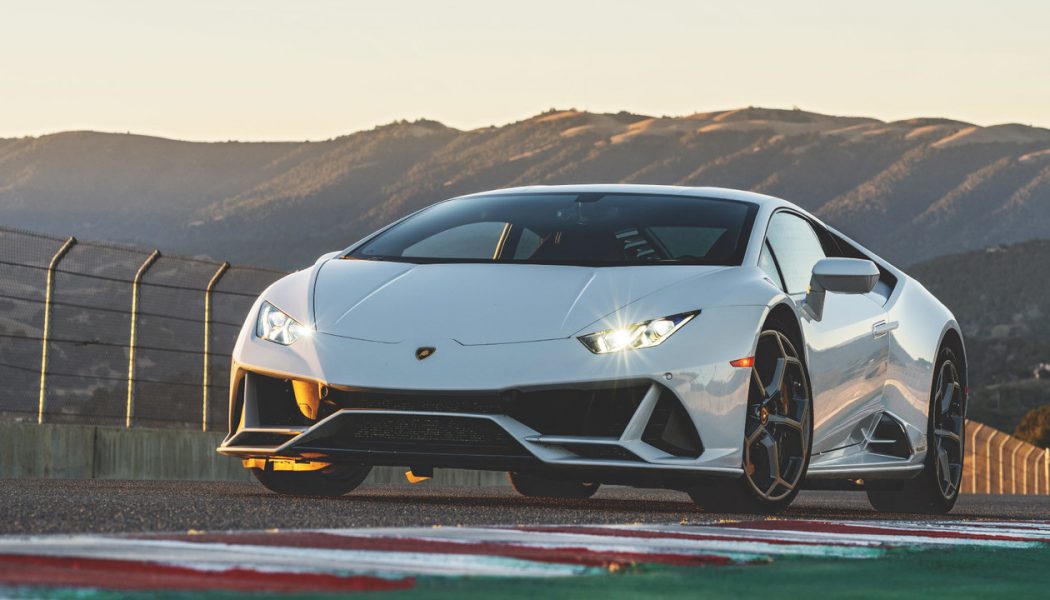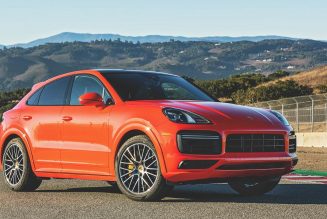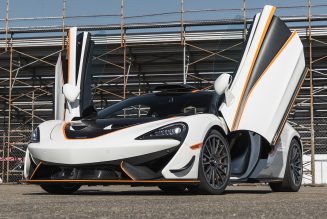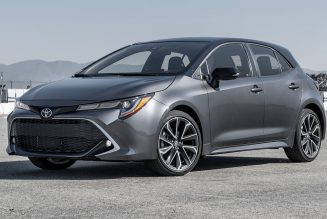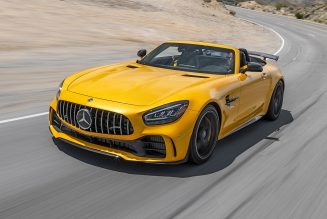Lamborghini Huracan Full Overview
“Had this been a typical Lamborghini press drive, I’d be writing this 2020 Lamborghini Huracán Evo RWD review after blasting around a far-flung racetrack,” road test editor Chris Walton wrote in our Huracán Evo RWD First Drive a few months ago. Instead, thanks to 2020, he spent his time piloting the new “entry-level” Lamborghini alone around some of Southern California’s finest driving roads.
Not long after his drive, however, Lamborghini offered us the chance to drive the new Huracán Evo RWD at “The Fastest Road in the West,” on Willow Springs International Raceway’s famous Big Willow circuit. As an added bonus, I also had a brief opportunity to sample the new 2020 Lamborghini Huracán Evo RWD Spyder on the roads surrounding the racetrack. Here’s a quick review of how the new Lamborghini Huracáns stack up.
What Is the 2020 Lamborghini Huracán Evo RWD?
Before we delve too deeply into the how, a quick reminder on the what: The new 2020 Lamborghini Huracán Evo RWD coupe and Spyder are the latest entry-level sports cars from the famed Italian performance marque. Replacing the Huracán LP 580-2, this Huracán Evolution sports updated exterior styling with improved aerodynamics, a revised interior featuring fighter jet-inspired seats, a new infotainment system, and powertrain updates including titanium intake valves and a new performance exhaust system.
In comparison to the relatively new all-wheel-drive Huracán Evo, the Huracán Evo RWD loses the front driveshaft and sees its mid-mounted 5.2-liter V-10 detuned from 630 horsepower and 443 lb-ft of torque to 602 hp and 413-lb ft. Like the all-wheel-drive model, the Huracán Evo RWD puts its power to the ground via a seven-speed twin-clutch automatic gearbox.
One of the most significant changes Lamborghini made to the 2020 Huracán Evo RWD is in its performance traction-control system, or PCS, tuning. Its three drive modes have three distinct personalities. The normal Strada, or street, setting is a conservative program that makes the Huracán as docile as an Audi A5 dicing through traffic. Sport mode stiffens up the optional MagneRide magnetic shocks, firms up the steering and throttle response, quickens the transmission’s shifts, and relaxes the traction control’s intervention to allow what Lamborghini calls “constant throttle drifts.” Corsa, or race, mode is a track-focused program that stiffens the suspension further, quickens shifts yet again (though they must be completed manually via massive carbon-fiber paddles), and sets throttle and steering response to help the Huracán get around the track as quickly as possible.
2020 Lamborghini Huracán Evo RWD: Racetrack Performance
The latest entry-level Huracán’s racetrack manners depend upon which driving mode you choose. During Lamborghini’s socially distanced track session, I chased an instructor around Big Willow, first in Sport, and then in Corsa. The difference between the two modes is night and day.
Rather than the buttoned-down but knife-edge feel you get in something like a Porsche 911 in its own Sport mode, the same mode in the Huracán Evo RWD at first feels loose. The Lamborghini’s steering is firm and direct, and the throttle response is instantaneous—but it’s easy to catch an inescapable feeling that the rear end wants to step out on you. In reality, though, the Huracán defaults to safe understeer unless you provoke it intentionally with heavy throttle.
Corsa mode, in comparison, turns the 2020 Huracán Evo RWD into a proper track car. The suspension stiffens noticeably, the steering somehow becomes even more direct and accurate, and the car feels impressively composed. It comes across as a true driver’s car that lets you focus on the racetrack in front of you instead of worrying about what the car is or isn’t doing.
Some supercar shoppers might be inclined to get an AWD Huracán Evo purely for the added safety and peace of mind of having four driven wheels (not to mention the extra power and quicker acceleration), but the electronic tuning in the 2020 Lamborghini Huracán Evo RWD works so seamlessly in the background, you don’t ever feel like it’s saving your ass. It’s transparent and, again, lets you focus on your line, which is exactly what you want from a good driver’s car. And on the street, there’s so much grip available at any speed resembling even remote sanity, you essentially have to entirely turn off the traction and stability controls before the car becomes a maniacal oversteer machine. In other words, if the thought of a rear-drive Huracán inspires feelings of intimidation, it should not.
What About the 2020 Lamborghini Huracán Evo RWD Spyder?
The roadster version of the Huracán Evo RWD is in a lot of ways simply a Huracán Evo RWD coupe with a power-folding cloth top that works at speeds of up to 31 mph.
Out on the desert roads surrounding Willow Springs—including sections of our Car of the Year drive loop—the Huracán Evo RWD Spyder is a ridiculously competent supercar. On stretches of highway and interstate in Strada mode, the cabin quiets down, steering gets light, and the suspension capably absorbs the various potholes, bumps, and railroad crossings on the route. It’s almost, weirdly, boring enough to lull you into a sense of complacency as you find yourself stuck behind a Scion xB doing 5 below the limit.
Then, though, you remember the 602-hp V-10 behind you. Switch into Sport mode and blast past the toaster box; the Huracán Spyder is just as good as its hardtop stablemate. Unlike what I found on the track, Sport mode in the 2020 Lamborghini Huracán Evo RWD Spyder was well suited to the canyons of our familiar COTY loop. The Lambo was planted, quick, and agile, and its transmission was always in the right gear at the right time, even in automatic mode. Even better, the Huracán doesn’t punish you for wringing it out properly—its suspension tuning strikes a great balance between firm and compliant, ensuring you can always put the power down at a moment’s notice.
How Much Is a 2020 Lamborghini Huracán Evo RWD?
These are expensive cars, but you knew that already. The 2020 Lamborghini Huracán Evo RWD coupe starts at $214,366, undercutting the Lamborghini Urus SUV and making the Huracán Evo RWD the cheapest way to put a new Lambo in your driveway. The new Lamborghini Huracán Evo RWD Spyder is of course a bit more; prices for the roadster start at $235,223. Yes, the Huracán Evo RWD is a somewhat decontented Huracán, but more important is the fact it’s one of the best-driving cars Lamborghini has ever put on the road.
2020 Lamborghini Huracán Evo RWD Pros:
2020 Lamborghini Huracán Evo RWD Cons:
- Expensive, yet …
- … Some people will know it’s the “cheap” Lamborghini
- We had to give it back
| 2020 Lamborgini Huracán Evo (RWD) | |
| BASE PRICE | $214,866 |
| LAYOUT | Mid-engine, RWD, 2-pass, 2-door coupe |
| ENGINE | 5.2L/602-hp/413-lb-ft DOHC 40-valve V-10 |
| TRANSMISSION | 7-speed twin-clutch auto |
| CURB WEIGHT | 3,300 lb (MT est) |
| WHEELBASE | 103.2 in |
| L x W x H | 177.9 x 76.1 x 45.9 in |
| 0-60 MPH | 3.3 sec (mfr est) |
| EPA FUEL ECON | 13/18/15 mpg |
| ENERGY CONSUMPTION, CITY/HWY | 259/187 kW-hrs/100 miles |
| CO2 EMISSIONS, COMB | 1.13 lb/mile |
| ON SALE | Currently |
